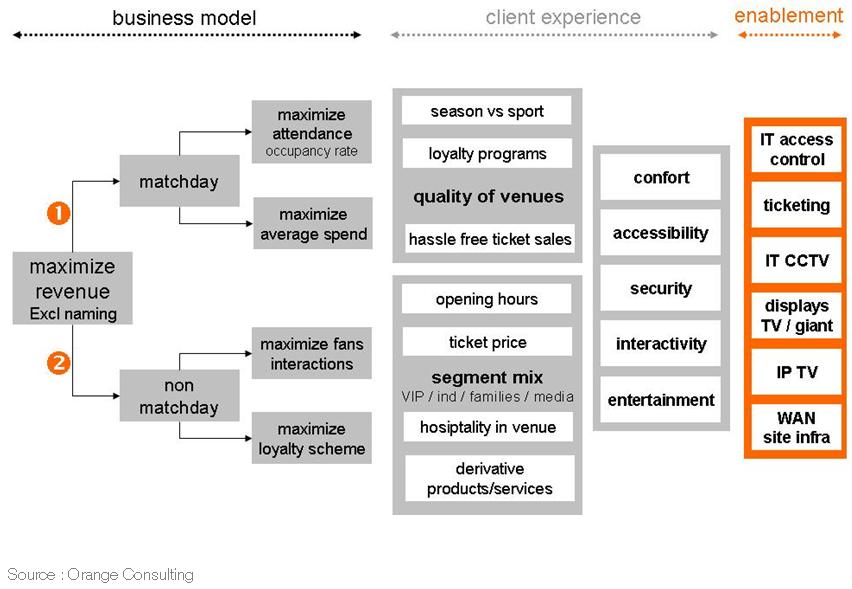For over two years now there have been conflicting storylines regarding mobile endpoints for unified communications solutions. As a point of disclosure, I will tell you that I never really believed in one and was only half-heartedly convinced of the other.
is there a BYOD revolution? as with any revolution, chaos reigns
On the one hand, you see articles, white papers, webinars, and sales presentations detailing how the BYOD (Bring Your Own Device) revolution is upon us. How everyone and their brother (except, it seems, your company of course) is letting anyone and everyone connect to corporate networks with iPads, Galaxy's, iPhones, and Droids. Naturally the anti-hero in this narrative is the evil IT overlord who screams "security! security!" and tries to banish the ubiquitous products back home "where they belong."
enterprise-class tablets? as with many classes, wake me when it's over
On the other, more formal and therefore boring hand, you had the enterprise-class or enterprise-ready tablets made by the various telecom device makers such as the Cisco Cius, the Avaya Flare Experience and, to a lesser degree, the Blackberry Playbook by RIM. This story relied very much on the fear-mongering created by the BYOD revolution and appealed to the aforementioned IT overlord.
As a quick summary, these devices were not only just as good as your iPad/Galaxy but were expected to be more secure than consumer products, offer tighter integration to enterprise applications, and, as a kicker, they were to be deskphones and video endpoints as well as tablets. Sounds like a panacea doesn't it?
so what happened? (as with most technology) I don't know, ask my kids


A quick google search of tablet sales will eventually lead you to the myriad of reports that detail Apple's complete market dominance, to the tune of a 66+% marketshare (yes, for one device). The story pretty much begins and ends there, but since we aren't worried about wasting ink or paper in this medium (just your time dear reader), let's explore further.
Fundamentally, the enterprise tablets were handicapped by being themselves. They came out of their last innovation stage-gate (not a production stage-gate mind you) right around the time that the iPad was having a quick aperitif to wash down its feast on the netbook market.
As the marketplace saw hundreds of thousands of apps developed for the iPad, the enterprise versions struggled to find these "tight integrations" of a few apps that would be a key selling point. As Steve Balmer famously said, they needed “developers, developers, developers!”
Those same users would leave work, and go home to watch their kids Facetime and Skype with last year's exchange student from Paris by touching twice on the screen of their "consumer-grade" tablet. Then they would share pictures, videos, documents via Dropbox and find out about job opportunities on Facebook or LinkedIn. Even the least connected VP or C-level executive could tell that what they were seeing at home was collaboration. This was the same panacea being touted as the future in the latest IT briefing. But, it didn't require a timetable of 24-36 months or have a pricetag that could choke a Ways and Means Committee Chairman ( "a million here and a million there and pretty soon we are talking about real money").
ok, I've read this much, so what's next? as you would expect #LearntolovetheBYOD

What strikes me most about the whole story is that it all took place in what can be seen as the most scrutinized and analyzed marketplace in the history of the world. Basically, the enterprise watched as the iPhone destroyed RIM's dominance, killed Windows Mobile, and fended off Android devices again and again. They then sat by as the iPad ate the Netbook market, boosted Mac sales on the corporate desktop and laid out their next three generation upgrade plans for everyone to see (did they really think it would be hard for Apple or Samsung to add a front-facing camera or improve the performance specs in time for Christmas?).
Recently Cisco announced the virtual death of the Cius. RIM is struggling to regain its once dominant status, and I don't believe Avaya will continue the sale of their Flare tablet, regardless of their current statements. I expect Avaya to keep the product in their current customer base and not announce the end of Flare; however I suspect they will simply no longer push the Flare device; instead they will "allow" the customers to direct the deals into iPads via the Flare for iPad app.
The main wild-card here is Microsoft. Windows 8 is getting good reviews, and the mobile OS has gotten some traction despite the slip up by Nokia. But there isn't a clear path for those two vectors to meet and beat back Apple in the enterprise tablet arena. Though, a strong hold by the Office product suite coupled with a good performance by Lync messaging will set them up nicely with a strong base.
So I say we go back and learn from our history. Please open your textbooks to the mid 1980s (any page will do). The best path here and most probable scenario is that Microsoft will make a decent OS that takes most of the common characteristics of the iPad and Android systems. Then, Microsoft will license it out to a few key players and let them produce an unbelievably cheap alternative: one that changes the conversation from "man, why can't we do this at work" to "hey, it's not an iPad but it does these 4 main things at 1/4 the cost...I'll take 'em!"
tablets image © iQoncept - Fotolia.com
children's image © Uwe Annas - Fotolia.com
bird's image © Thomas Pajot - Fotolia.com

Joshua Sillers has been with Orange for the past 12 years working to enhance the customer experience. He is currently serving as a Collaboration Sales Expert with an emphasis on Team collaboration tools, API interactions, Orange OpenLabs and User Adoption Services. Joshua holds a B.A. degree in International Relations and Spanish from Concordia College in Moorhead, MN and a Masters of Science in Technology Management from the University of Minnesota.